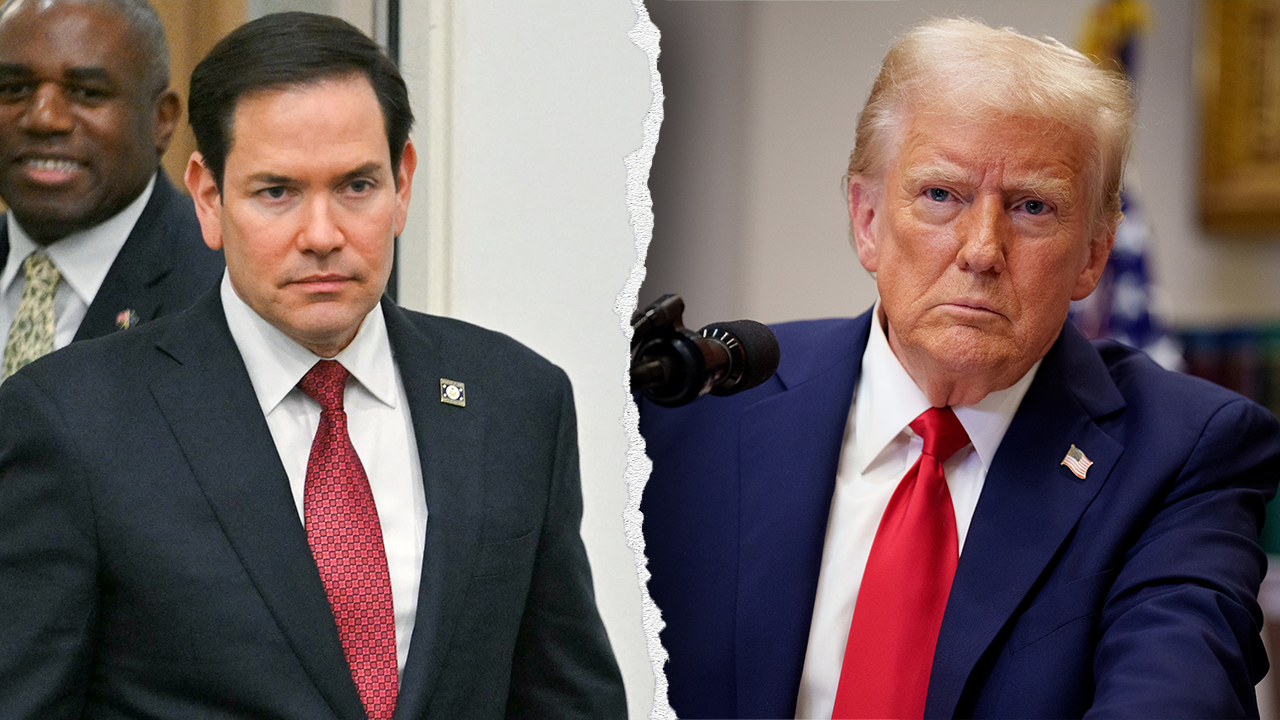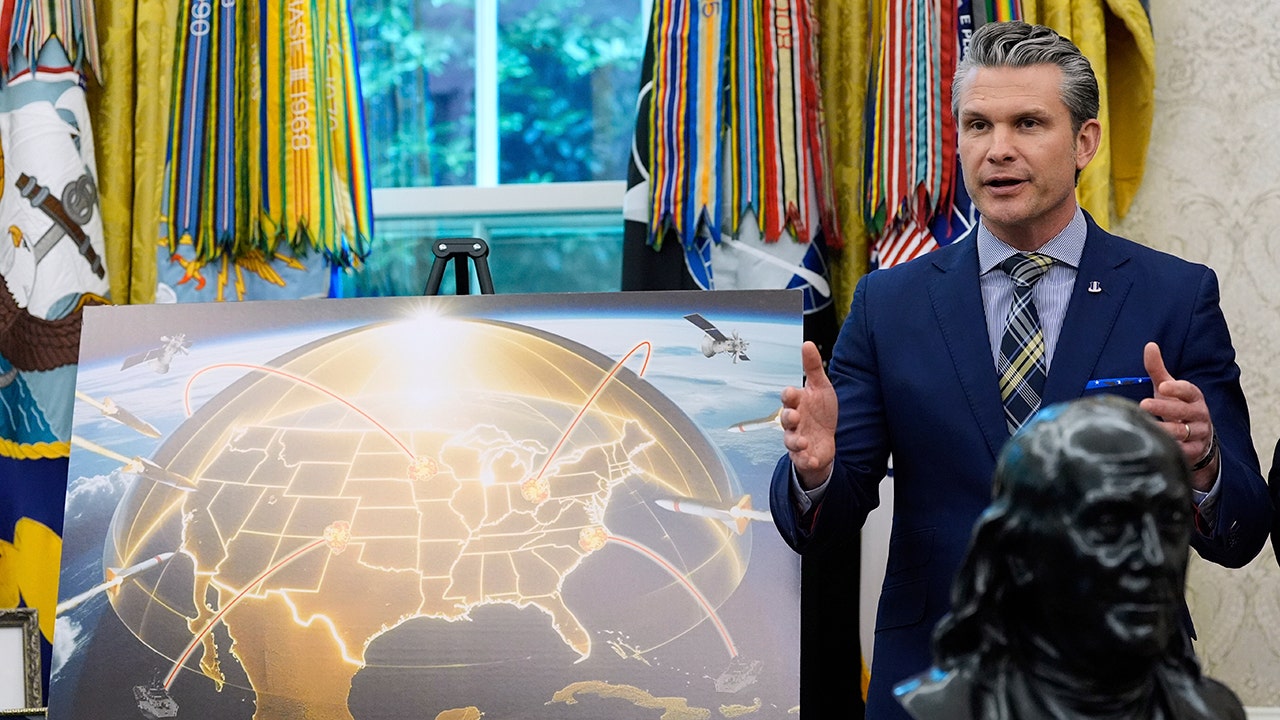Business
Trump tees up tariff hikes on top trading partners. What's at stake for California?
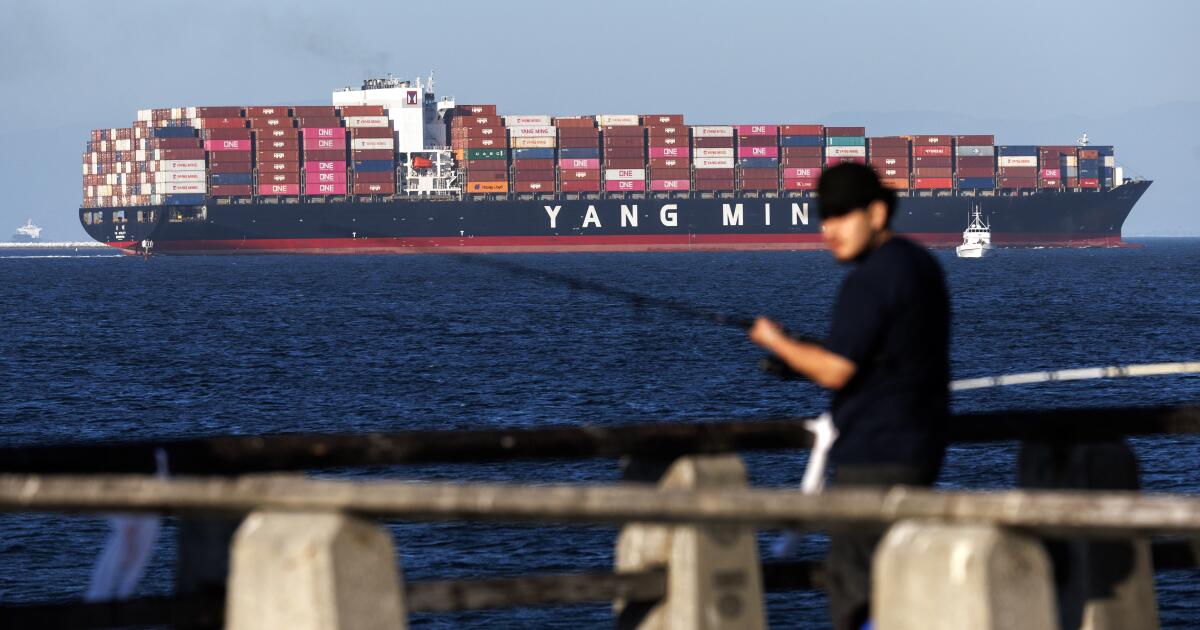
WASHINGTON — When President-elect Donald Trump announced he would impose sweeping tariffs on key trading partners on his first day in office, he signaled a return to a favorite strategy: a reverse carrot-and-stick that applies the stick of dire consequences in order to force countries to give him what he wants. In this case, that means a tougher crackdown on illegal migration and the movement of drugs into the U.S.
The risk of applying this tactic to foreign trade is that the whole U.S. economy is so reliant on the status quo that any miscalculation could have damaging consequences, especially in California and other trade-dependent states.
To some extent, that happened in Trump’s first term, when selective tariff increases set off costly trade wars with China and others.
The fallout from tariffs could have major damaging effects on California’s globally integrated economy, affecting thousands of businesses and many more jobs, consumer prices and choices of goods. And, if trading partners retaliate, tariff increases could hurt the state’s sales of farm goods, electronics, transportation equipment and other leading exports. Mexico and Canada are the top two destinations for California exports, and China and Mexico account for the bulk of the state’s imports.
Even uncertainty over such possibilities can cause havoc in financial markets and raise fears of higher prices, as well as disruptions to vital businesses dependent particularly on Mexico and the Pacific Rim.
Trump posted on his Truth Social site late Monday that on his first day on the job he would impose 25% tariffs on all goods from Canada and Mexico, and also tack on an additional 10% levy on Chinese imports. He said these countries — which are the United States’ top three trading partners — would be paying the price for not doing enough on illegal migration and drugs flowing into the U.S.
“This Tariff will remain in effect until such time as Drugs, in particular Fentanyl, and all Illegal Aliens stop this Invasion of our Country!” Trump wrote.
The reality is that illegal border crossings from Mexico have fallen dramatically in recent months as the Biden administration has tightened up especially on asylum arrivals.
And U.S. drug seizures along the Southwest border have changed little in recent years, according to Department of Homeland Security statistics.
For years, China has been a major producer of fentanyl coming into the U.S., and Trump said in his post that Beijing has failed to clamp down on drug suppliers as it had promised.
Canada is not a big source of illicit drugs or illegal migration into the U.S., although there has been a sharp increase in unauthorized crossings along the northern border in the last year, driven in large part by Indians. Trump didn’t explain why Canada was targeted, but some analysts said he may be viewing the drug and migration situation as a North American problem.
U.S. stock markets, which had been on a run in recent days, opened mixed Tuesday but ended the day higher, suggesting that investors are familiar with Trump’s playbook and that these three countries could avoid the tariffs if they present a credible plan to curb the drug supplies and secure the borders, said analysts at Capital Economics. Mexico staved off a similar Trump threat over illegal migration in 2019.
But Trump’s salvo just three weeks after the election, plus his frequent campaign promises of hiking tariffs, suggests that he will move more quickly in carrying out his trade agenda than in his first term.
Trump has said he would slap tariffs of 10% to 20% on goods from around the world, and up to 60% on imports from China.
The consequences could be dire for California’s economy, given its heavy trade with China and Mexico.
Imports from China ($120 billion) and Mexico ($62 billion) accounted for a full 40% of the $450 billion worth of foreign products that entered California last year. And Mexico, Canada and China rank as the state’s top three export markets.
Overall, international trade and investment and related commerce employ hundreds of thousands of Californians and are a major economic engine for the state.
At the Port of Los Angeles, China’s share of all cargo, as measured by containers, has fallen to 43% from 57% in 2022. But the Port of L.A., the busiest in the nation, has kept growing in overall volume due to increased shipments from other Pacific Rim countries.
With U.S.-China relations worsening over the last decade, many manufacturers in California, as elsewhere, shifted at least some production and suppliers away from China to other sites in Asia and also to Mexico. But the scale of tariffs that Trump is announcing, whether 10% across the globe or separate duties on Chinese, Mexican and Canadian goods, would be too great for other countries to make up.
Much of U.S. imports from China and Mexico are consumer goods and intermediate parts that go into autos, appliances and other products. Southern California apparel companies have for years been sending clothes to be sewn and finished in Mexico, duty-free. Vehicle components often cross North American borders back and forth several times before final assembly — and tariffs added along the way will mean higher prices for everybody.
Now those long-established supply chains may be in jeopardy as analysts expect Trump to try to remake trade deals with North American partners, among others, using tariffs and the big American economic market as leverage.
“It’s going to be a jolt to the system, and at the end of the day it will be impactful to consumer pocketbooks,” said Rachel Michelin, president of the California Retailers Assn. She said her member companies have been trying to get ahead of higher tariffs by ordering products before Trump takes office.
“From a California perspective, it’s going to be alarming because the cost of living here is higher,” Michelin said. “We really are pricing people out of living in California.”
In Trump’s first term, China and other countries hit back by raising tariffs on sensitive American farm goods, including soybeans and wine. But overall trade also slowed, with U.S. companies scurrying to file for tariff exemptions and trying to curry favor with his administration for relief.
Jock O’Connell, a California trade specialist at Beacon Economics, said the Trump administration’s trade skirmishes with China in 2017 caused a dramatic falloff in the state’s trade volume. California exporters learned to diversify their markets. This time around, he said, the state may have even fewer options.
“There’s not going to be a lot of political payoff” in helping California, O’Connell said. “Can you imagine [Gov.] Newsom flying to Washington to meet with trade officials in the White House to deal with tariffs?”
Greg Danenhauer, co-owner of Parker Boiler, a manufacturer in City of Commerce, said he still buys some steel and cast iron burners from China, but overall looks to China for less than 18% of his supplies, compared with as much as 25% in 2016. Parker Boiler also buys temperature controls and other products from Mexico.
Danenhauer said Trump’s earlier tariffs on Chinese products actually helped level the playing field for domestic makers such as himself. And he’s not worrying about higher tariffs down the road.
“To me, everybody is panicked about it,” he said. “But we don’t know yet” what’s coming, he said.
Dan Ujczo, a trade lawyer at the Ohio-based firm Thompson Hine, drew a distinction between Monday’s tariff announcement, which he said was “very tactical and transactional, targeted for a specific purpose,” and Trump’s plans on universal tariffs and those aimed at China. The latter “are more transformative or transitional when it comes to global trade,” he said, adding that they are likely to be proposed later and closer to when tax cuts and other fiscal plans are ready.
During his first term, Trump often used threats such as high tariffs to browbeat America’s allies into concessions. On defense policy, for instance, he famously raised doubts about continued U.S. participation in the North Atlantic Treaty Organization; European allies responded by boosting their contributions to the cost of mutual defense.
Chinese imports are already subject to U.S. tariffs of 10% to 25% stemming from Trump’s actions in his first term and which were left in place by President Biden. That helped Mexico overtake China in 2021 as the United States’ top two-way trading partner. Still, the United States’ biggest trade deficit, by far, remains with China, in excess of $279 billion last year, according to the Census Bureau.
Trump’s tariffs announced Monday, if implemented, would almost certainly cause significant disruptions for industries and raise consumer costs for gas, autos and all sorts of other products, possibly reigniting inflation, which appeared to be a key factor in his election victory.
The U.S. imported a total of about $1.3 trillion worth of goods from those three countries last year, and about two-thirds of that amount came in tariff-free, thanks to the U.S. free trade agreement with Mexico and Canada.
Despite that trade pact, experts said Trump could impose the tariffs by using the statutory authority under the International Emergency Economic Powers Act of 1977, which he cited extensively in his first term, including in his dealings with Mexico and China.
Whether tactical or not, the tariff threats could escalate — Mexico already said it could retaliate with counter-tariffs. And some economists warned that Trump’s plans could backfire.
“It’s a reckless grenade toss,” said Michael Clemens, an economics professor at George Mason University who specializes in international migration. “Harming American consumers and workers with a trade war will do nothing at all to address their concerns about immigration and drugs.”

Business
Apple is back in Trump's crosshairs over where iPhones are made
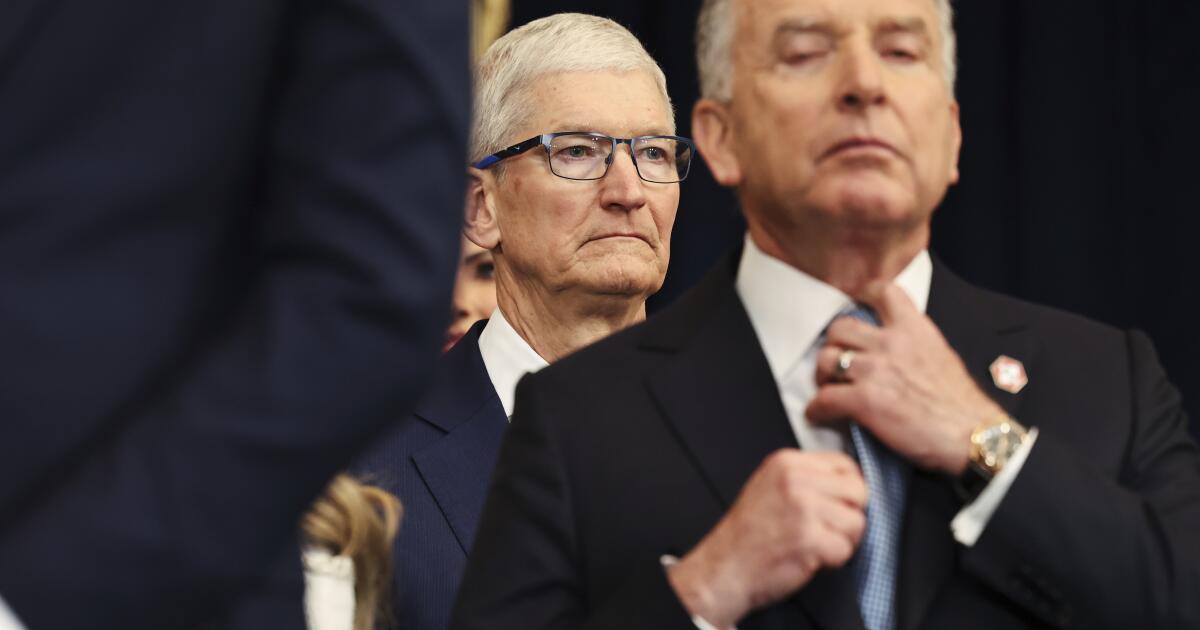
Apple Chief Executive Tim Cook can’t seem to catch a break.
Last month, Apple appeared to secure a major win when the Trump administration agreed to remove tariffs on certain electronics imported from China following concerns that the prices of smartphones and computers could rise.
But Trump threw Apple another curveball this week when he expressed frustration about the tech giant producing the iPhone in other parts of Asia.
“I have long ago informed Tim Cook of Apple that I expect their iPhone’s that will be sold in the United States of America will be manufactured and built in the United States, not India, or anyplace else. If that is not the case, a Tariff of at least 25% must be paid by Apple to the U.S.,” Trump said in a post Friday on the social network Truth Social.
Apple didn’t respond to a request for comment about Trump’s remarks.
The public spat underscores the fine line businesses are trying to walk as they try to navigate Trump’s tariffs. Tech companies in particular have to work with the new administration, while also trying to find ways to offset the costs of potential tariffs.
Trump has pushed for companies to build and manufacture products in the United States as part of an effort to strengthen national and economic security.
But shifting production to the United States would take years and result in price hikes for consumers who are already watching their spending, economists and analysts have said.
“We believe the concept of Apple producing iPhones in the U.S. is a fairy tale that is not feasible,” Wedbush Securities analyst Dan Ives said in a note Friday about Trump’s remarks.
However, Trump told reporters later Friday that he believes Apple can build an iPhone in the United States.
The tariffs are expected to start in June and would also impact Samsung and other smartphone makers “otherwise it wouldn’t be fair,” he added.
“I had an understanding with Tim that he wouldn’t be doing this. He said he’s going to India to build plants. I said, ‘That’s OK to go to India, but you’re not going to sell into here without tariffs.’ And that’s the way it is,” Trump told reporters in the Oval Office.
Apple makes most of its iPhones in China, but in recent years has expanded production in India, Vietnam and other countries.
In the June quarter, Apple expects to source the majority of iPhones sold in the United States from India, Cook said in Apple’s quarterly earnings call in May.
And Foxconn, a Taiwanese electronics contract manufacturer that assembles Apple’s products, is planning to build a $1.5-billion plant in India, the Financial Times reported, citing two anonymous government officials. A representative of Foxconn could not be reached for comment.
Ives said it would take at least five years for Apple to shift production to the U.S. and the prices of iPhones could reach $3,500 if the smartphone was made in America. Depending on the model, the current cost of an iPhone can start from $599 but go over $1,000.
Tariffs would also make it more expensive to repair an iPhone because the smartphone includes parts that come from suppliers in other countries including China, Taiwan, South Korea and Japan, according to iFixit, an ecommerce website focused on repairs. For example, the display for the iPhone 16 Pro comes from South Korea; the battery comes from China.
In total, the iPhone 16 Pro is made up of roughly 2,700 parts sourced from 187 suppliers in 28 countries, according to an April report from TechInsights.
Apple isn’t alone in navigating the potential impact of tariffs. Other U.S. companies including Walmart have said they would raise prices as they face political pressure to eat the costs of tariffs.
Apple is in a tricky spot because if the Cupertino, Calif.-based company raises the prices of iPhones, consumers could just delay buying new electronics, which would also cut into the company’s profits at a time when it is facing heavy competition from rivals in the burgeoning market for AI.
On top of that, Trump has also criticized companies such as El Segundo toy maker Mattel, which is considering raising prices, and Amazon, which considered showing the cost of tariffs next to some of its products, but didn’t approve the idea.
Cook has previously said that while there’s a popular conception that companies go to China for low labor costs, the reason Apple depends on China is for the skill of its workforce.
“In the U.S., you could have a meeting of tooling engineers and I’m not sure we could fill the room. In China, you could fill multiple football fields. It’s that vocational expertise that is very deep,” Cook said at the Fortune Global Forum in 2017.
For a time, it seemed that Apple was in Trump’s good graces. The company has garnered praise from Trump when the smartphone maker announced in February that it planned to invest $500 billion in the United States, hire 20,000 people and open a new manufacturing factory in Texas over the next four years.
Trump’s on-again, off-again tariffs have meant that businesses such as Apple are also facing economic uncertainty.
Last week, the U.S. struck a deal with Chinese officials to roll back most tariffs for 90 days. The U.S. agreed to drop the 145% tax Trump imposed on Chinese goods to 30%.
Apple has been monitoring the potential impact of tariffs. In May, Apple estimated that tariffs could add $900 million to the company’s costs, but that assumed new tariffs weren’t added.
On Friday, Apple’s stock dropped roughly 2% to $195.98 per share after Trump’s announcement.
Business
How South Korea’s next president wants to deal with Trump and his tariffs

SEOUL — The winner of South Korea’s upcoming presidential election will be faced with the task of uniting a country riven by political acrimony since the impeachment of former President Yoon Suk Yeol, who sparked national outrage after declaring martial law in December.
But first, they will have to contend with President Trump’s tariffs.
On Wednesday, U.S. and South Korean trade officials kicked off a new round of negotiations aimed at reaching a deal by July 8, when Trump’s 90-day reprieve for his “liberation day” tariffs expires. South Korea faces a 25% reciprocal tariff rate as well as product-specific duties of 25% for steel, aluminum and automobiles — all of which are major exports.
With the election scheduled for June 3, carrying these talks to the finish line will be the first and most pressing agenda item for South Korea’s next president.
For now, officials from the two countries have agreed to expand the talks beyond tariffs rates to include broader topics such as currency exchange rates and economic security — a reflection of Trump’s desire for a sweeping realignment of the U.S.–South Korea relationship that he has described as “one-stop shopping.”
But there are likely to be further complications.
Trump, who has long griped that South Korea does not pay enough for the upkeep of the 28,500 U.S. troops stationed in the country, has expressed a desire to fold defense cost-sharing into the current talks. Writing on his social media site last month, he said that he had discussed “payment for the big time Military Protection we provide to South Korea” with then-acting President Han Duck-soo.
But with Trump having once claimed he would get Seoul to pay $10 billion a year, the topic has been highly sensitive in South Korea, fueling calls for the country’s nuclear self-armament on grounds that the U.S. can no longer be relied upon for military support. There are also concerns in the country that a “package deal” favored by Trump may not work out to Seoul’s advantage.
Here’s what to know about what South Korea’s three leading presidential candidates have said about tariffs and the U.S.-South Korea relationship under Trump.
Lee Jae-myung, a candidate of the ruling Democratic Party, holds a news conference in January.
(Chung Sung-Jun / Associated Press)
Lee Jae-myung
The former leader of South Korea’s liberal Democratic Party, Lee, 61, is the front-runner in the race, having led by as many as 20 percentage points.
During Trump’s first term, Lee, then the mayor of Seongnam, cautioned against what he called “overly submissive attitudes” in the face of demands that South Korea should pay more for the presence of the U.S. military.
“Giving up whatever is demanded of us will only lead to us losing everything,” he said. “We need to boldly assert our position.”
Lee echoed those sentiments in a presidential debate Sunday, criticizing Han, the former acting president, for reportedly signaling his willingness to renegotiate the latest defense cost-sharing deal between Seoul and Washington.
Under what is known as the Special Measures Agreement, the U.S. has covered 40% to 50% of the total costs of keeping troops in South Korea, according to the U.S. Congressional Research Service.
Under the latest version, which was signed under the outgoing Biden administration and will last from 2026 to 2030, Seoul’s annual contribution in the first year will be $1.19 billion, an 8.3% increase from 2025.
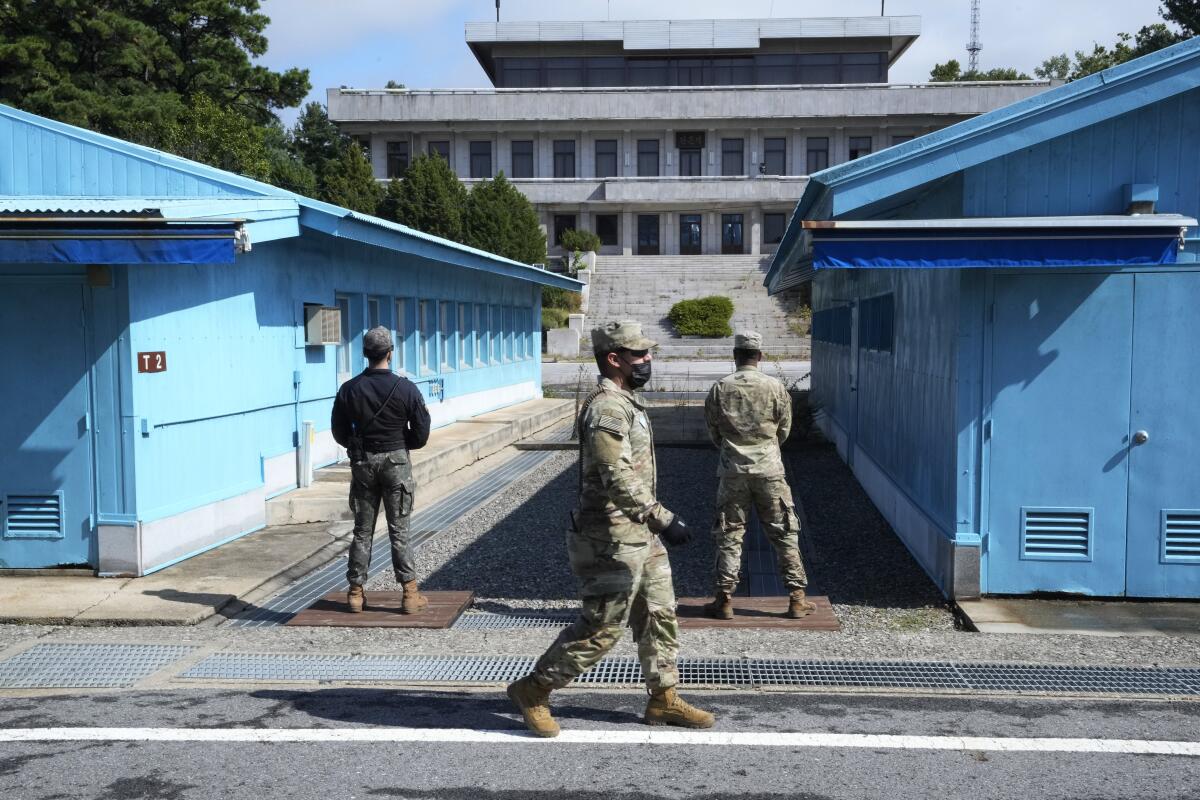
A U.S. soldier walks at the Panmunjom border village in Paju, South Korea. President Trump has long complained that South Korea does not pay enough for the upkeep of the 28,500 U.S. troops stationed in the country.
(Ahn Young-joon / Associated Press)
Lee, who is running on a platform of pragmatic diplomacy, has also stressed the need to balance South Korea’s relationship with the U.S. against those with regional neighbors such as Russia or China.
“The U.S.-South Korea alliance is important, and we need to expand and develop that in the future — from a security alliance into an economic alliance and a comprehensive alliance,” he said Sunday. “But that does not mean we can rely exclusively on the U.S.-South Korea alliance.”
While describing Trump’s tariffs as the “campaign of a madman,” Lee has also indicated a willingness to discuss a package deal that spans Trump’s Alaska natural gas pipeline project, the defense cost issue and cooperation in shipbuilding.
Lee’s camp has said that if elected, he will begin his term by seeking an extension of Trump’s 90-day grace period for the tariffs.
“If we win the election we will need time to closely examine the issues at the center of the trade relationship with the U.S. as well as any progress made on the tariff negotiations and come up with alternatives,” an official from Lee’s camp told the South Korean newspaper Donga Ilbo last week.

South Korea’s People Power Party’s presidential candidate Kim Moon-soo campaigns Tuesday in Seoul.
(Ahn Young-joon / Associated Press)
Kim Moon-soo
A distant second in the polls, Kim, 73, served as labor minister under the impeached Yoon and is the conservative People Power Party’s nominee.
Staying true to the South Korean right’s self-identification as the staunchly pro-U.S. political camp, Kim has accused Lee of seeking to curry favor with China at the expense of the U.S.-South Korea relationship.
“Your comments in the past would be considered appalling from the perspective of the U.S.,” he told Lee at the debate Sunday.

Participants march to the headquarters of the People Power Party in Seoul during a December 2024 rally to demand South Korean President Yoon Suk Yeol’s impeachment.
(Ahn Young-joon / Associated Press)
Unlike Lee, who has warned against rushing into a trade deal in favor of a slower and more strategic approach, Kim has said that he would immediately set up a U.S.-South Korea summit to ink a deal before July 8, if he is elected president.
“I will make sure that tariffs against South Korea are either removed or the lowest out of any country in the world,” he said at a recent rally.
To this end, Kim has cast himself as the candidate with the greatest chance of winning over Trump.
During his party’s primary debates in April, when asked by the moderator whether he would wear a MAGA hat if Trump requested it during any tariff negotiations, Kim responded: “I would do even more, I would even wear a jumper if he asked.”
“The most important thing in negotiating with President Trump is trust,” he said Sunday. “Only when both sides can trust each other can the U.S.-South Korea alliance be strengthened, and I am the one who has the most favorable and trusting relationship with President Trump.”

A currency trader works at the foreign exchange dealing room of KEB Hana Bank headquarters in Seoul last month.
(Ahn Young-joon / Associated Press)
On defense cost-sharing, Kim has struck a noticeably more acquiescent tone than Lee: At a meeting Monday of the American Chamber of Commerce in Korea, he said that he would be willing to accept a hike in Seoul’s contribution.
“The global order and trade environment is rapidly changing. In order to overcome these crises, it is critical that we strengthen positive cooperation and the U.S.-South Korea alliance,” he said. “I will establish common ground between the two countries through comprehensive negotiations and find a win-win solution for both.”

Lee Jun-seok, the presidential candidate of the New Reform Party, center, runs to attend a campaign event Saturday in Seoul.
(Ahn Young-joon / Associated Press)
Lee Jun-seok
Polling around 10%, the 40-year old candidate from the conservative Reform Party faces long odds for the presidency.
Still, he has emphatically rejected repeated calls to form a unity ticket, presenting himself as the younger, shrewder and less doctrine-driven alternative to what he has criticized as the old-hat conservatism of those such as Kim.
At the debate Sunday, Lee Jun-seok called for “careful calculation” in navigating the U.S.-South Korea relationship under Trump, while emphasizing the need to demonstrate that South Korea is not just a trading partner but also an important strategic ally to Washington.
Yet when it comes to tariffs, he has also openly called Trump’s bluff.
“I think we have to bet on the fact that Trump will eventually find that it’s difficult to maintain this situation,” he said on a YouTube political talk show last month, citing the economic pressures that tariffs against China will create for Trump’s heartland supporters.
“What Trump is advancing isn’t sustainable…. My view is that, it’s likely that Trump will admit defeat as soon as within the next six months.”
Business
CalRecycle drafts revised plastic recycling rules that are more friendly to industry

State waste officials have taken another stab at rules implementing a landmark plastic waste law, more than two months after Gov. Gavin Newsom torpedoed their initial proposal.
CalRecycle, the state agency that oversees waste management, recently proposed a new set of draft regulations to implement SB 54, the 2022 law designed to reduce California’s single-use plastic waste. The law was designed to shift the financial onus of waste reduction from the state’s people, towns and cities to the companies and corporations that make the polluting products. It was also intended to reduce the amount of single-use plastics that end up in California’s waste stream.
The draft regulations proposed last week largely mirror the ones introduced earlier this year, which set the rules, guidelines and parameters of the program — but with some minor and major tweaks.
The new ones clarify producer obligations and reporting timelines, said organizations representing packaging and plastics companies, such as the Circular Action Alliance and the California Chamber of Commerce.
But they also include a broad set of exemptions for a wide variety of single-use plastics — including any product that the U.S. Food and Drug Administration and the U.S. Department of Agriculture have jurisdiction over, which includes all packaging related to produce, meat, dairy products, dog food, toothpaste, condoms, shampoo and cereal boxes, among other products.
The rules also leave open the possibility of using chemical or alternative recycling as a method for dealing with plastics that can’t be recycled via mechanical means, said people representing environmental, recycling and waste hauling companies and organizations.
California’s attorney general, Rob Bonta, filed a suit against ExxonMobil last year that, in part, accuses the oil giant of deceptive claims regarding chemical recycling, which the company disputes.
Critics say the introduction of these exemptions and the opening for polluting recycling technologies will undermine and kneecap a law that just three years ago Newsom’s office described as “nation-leading” and “the most significant overhaul of the state’s plastic and packaging policy in history.”
The “gaping hole that the new exemptions have blown” into the bill make it unworkable, practically unfundable, and antithetical to its original purpose of reducing plastic waste, said Heidi Sanborn, director of the National Stewardship Action Council.
Last March, after nearly three years of negotiations among various corporate, environmental, waste, recycling and health stakeholders, CalRecycle drafted a set of finalized regulations designed to implement the single-use plastic producer responsibility program under SB 54.
But as the deadline for implementation approached, industries that would be affected by the regulations including plastic producers and packaging companies — represented by the California Chamber of Commerce and the Circular Action Alliance — began lobbying the governor, complaining the regulations were poorly developed and might ultimately increase costs for California taxpayers.
Newsom allowed the regulations to expire and told CalRecycle it needed to start the process over.
Daniel Villaseñor, a spokesman for the governor, said Newsom was concerned about the program’s potential costs for small businesses and families, which a state analysis estimated could run an extra $300 per year per household.
He said the new draft regulations “are a step in the right direction” and they ensure “California’s bold recycling law can achieve its goal of cutting plastic pollution,” said Villaseñor in a statement.
John Myers, a spokesman for the California Chamber of Commerce, whose members include the American Chemistry Council, Western Plastics Assn. and the Flexible Packaging Assn., said the chamber was still reviewing the changes.
CalRecycle is holding a workshop next Tuesday to discuss the draft regulations. Once CalRecycle decides to finalize the regulations, which experts say could happen at any time, it moves into a 45-day official rule-making period during which the regulations are reviewed by the Office of Administrative Law. If it’s considered legally sound and the governor is happy, it becomes official.
The law, which was authored by state Sen. Ben Allen (D-Santa Monica) and signed by Newsom in 2022, requires that by 2032, 100% of single-use packaging and plastic foodware produced or sold in the state must be recyclable or compostable, that 65% of it can be recycled, and that the total volume is reduced by 25%.
The law was written to address the mounting issue of plastic pollution in the environment and the growing number of studies showing the ubiquity of microplastic pollution in the human body — such as in the brain, blood, heart tissue, testicles, lungs and various other organs.
According to one state analysis, 2.9 million tons of single-use plastic and 171.4 billion single-use plastic components were sold, offered for sale or distributed during 2023 in California.
Most of these single-use plastic packaging products cannot be recycled, and as they break down in the environment — never fully decomposing — they contribute to the growing burden of microplastics in the air we breathe, the water we drink, and the soil that nourishes our crops.
The law falls into a category of extended producer responsibility laws that now regulate the handling of paint, carpeting, batteries and textiles in California — requiring producers to see their products throughout their entire life cycle, taking financial responsibility for their products’ end of life.
Theoretically such programs, which have been adopted in other states, including Washington, Oregon and Colorado, spur technological innovation and potentially create circular economies — where products are designed to be reused, recycled or composted.
Sanborn said the new exemptions not only potentially turn the law “into a joke,” but will also dry up the program’s funding and instead put the financial burden on the consumer and the few packaging and single-use plastic manufacturers that aren’t included in the exemptions.
“If you want to bring the cost down, you’ve got to have a fair and level playing field where all the businesses are paying in and running the program. The more exemptions you give, the less funding there is, and the less fair it is,” she said.
In addition, because of the way residential and commercial packaging waste is collected, “it’s all going to get thrown away together, so now you have less funding” to deal with the same amount of waste, but for which only a small number of companies will be accountable for sorting out their material and making sure it gets disposed of properly.
Others were equally miffed, including Allen, the bill’s author, who said in a statement that while there are some improvements in the new regulations, there are “several provisions that appear to conflict with law,” including the widespread exemptions and the allowance of polluting recycling technologies.
“If the purpose of the law is to reduce single-use plastic and plastic pollution,” said Anja Brandon from the Ocean Conservancy, these new regulations aren’t going to do it — they are “inconsistent with the law and fully undermine its purpose and goal.”
Nick Lapis with Californians Against Waste said his organization was “really disappointed to see the administration caving to industry on some core parts of this program,” and also noted his read suggests many of the changes don’t comply with the law.
Next Tuesday, the public will have an opportunity to express concerns at a rulemaking workshop in Sacramento.
However, Sanborn fears there will be little time or appetite from the agency or the governor’s office to make substantial changes to the new regulations.
“They’re basically already cooked,” said Sanborn, noting CalRecycle had already accepted public comments during previous rounds and iterations.
“California should be the leader at holding the bar up in this space,” she said. “I’m afraid this has dropped the bar very low.”
-

 Education1 week ago
Education1 week agoVideo: Opinion | We Study Fascism, and We’re Leaving the U.S.
-

 Technology1 week ago
Technology1 week agoLove, Death, and Robots keeps a good thing going in volume 4
-

 News1 week ago
News1 week agoAs Harvard Battles Trump, Its President Will Take a 25% Pay Cut
-

 Culture1 week ago
Culture1 week agoBook Review: ‘Hunger Like a Thirst,’ by Besha Rodell
-

 Technology1 week ago
Technology1 week agoMeta asks judge to throw out antitrust case mid-trial
-

 Politics1 week ago
Politics1 week agoRepublicans say they're 'out of the loop' on Trump's $400M Qatari plane deal
-

 World1 week ago
World1 week agoCommissioner Hansen presents plan to cut farming bureaucracy in EU
-

 Politics1 week ago
Politics1 week agoDem senator says 'no doubt' Biden declined cognitively during presidency











